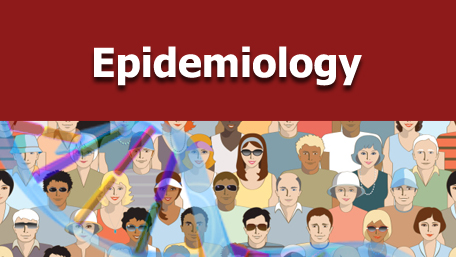Why racial diversity in genetics studies matters in patient care
On August 9, 2001, President George W. Bush enacted a policy limiting the number of human embryo stem cell lines that would be approved for scientific research. The measure was motivated by religious concerns, prompting criticism from scientists who warned that it would limit medical progress.
The policy was later overturned, but it provides an important insight into a key obstacle facing researchers today.
The problem was that the approved stem lines – which are used to develop new treatments and tissues for transplants – lacked ethnic diversity. Of the 64 stem lines suggested for approval, as many as 49 were thought to be from couples of European decent. The others were from Asian couples, essentially excluding people of African or Aboriginal descent, or many racially mixed groups.
That might not appear to be a major issue, since human DNA is approximately 99.5 percent similar across all humans. But there are key differences in that remaining half percent, primarily in the variations of specific genes, known as alleles. And some ethnic populations exhibit a higher frequency of certain alleles. Those differences could impact the way a person from one ethnic group reacts to a drug or a tissue transplant, relative to the general population.
 Not studying stem cell lines that include ethnic sub-populations limits our understanding of human biodiversity and threatens to weaken the effectiveness of drug therapies across a larger population.
Not studying stem cell lines that include ethnic sub-populations limits our understanding of human biodiversity and threatens to weaken the effectiveness of drug therapies across a larger population.
Or as evolutionary biologist Joseph Graves from Arizona State explained to the GLP’s Jon Entine, writing in the Washington Post:
If research is limited primarily to the announced stem cell lines, then you may develop drugs for, say, Alzheimer’s or Parkinson’s that work best only in those populations. There are many genetic variants that are only found in certain Asian populations [or] only found in sub-populations in Africa [or] only found in certain European populations.
Fortunately for researchers, the Bush limitations were overturned in March 2009 by executive order from President Barack Obama. Yet, diversity issues remain. These were illustrated that same year by two researchers from Duke University’s Institute of Genome Sciences and Policy.
They published an analysis of genome-wide association studies (GWAS), which are used to establish links between specific genetic variations and traits such as cancer risk. The researchers reported that 96 percent of participants in the various studies were of European descent. Especially in countries like the United States, where 62 percent of the population identifies as non-Hispanic white, focusing so strongly on one ethnic group can give researchers a skewed picture of genetic variation. And it means that any associations made between certain alleles and diseases in the study population may not be accurate when expanded to the general population. To avoid these pitfalls, the Duke researchers urged change:
,,,to avoid the genetics community contributing to healthcare disparities, it is important to adopt measures to ensure that populations of diverse ancestry are included in genomic studies, and that no major population groups are excluded.
It’s an issue that takes on added importance when you consider the way certain groups of people are more likely to be affected by specific disorders.
 “Every ethnic group has certain genetic diseases that are more prevalent in that group,” Michael Gambello, a geneticist at Emory University, told CNN in a report on the need for genetic risk testing in certain communities.
“Every ethnic group has certain genetic diseases that are more prevalent in that group,” Michael Gambello, a geneticist at Emory University, told CNN in a report on the need for genetic risk testing in certain communities.
The CNN story focused on inherited disease risks associated with Ashkenazi Jews, a European subpopulation known to be carriers of several disorders including Tay-Sachs.
But why do so many genetic studies lack diversity? There are good scientific reasons to explain it, according to Mike White, assistant professor of genetics at Washington University in St. Louis, who wrote for the Pacific Standard:
Assembling and evaluating thousands of people for a medical study requires a lot of infrastructure, and so early genomic studies piggy-backed onto existing study cohorts — like the famed Framingham Heart Study, which has been running since 1950 and currently includes over 10,000 people. This was an efficient way to get genomic studies off the ground, but it also means that those studies reflect the lamentable lack of diversity in established cohorts of human subjects.
But while the 2009 Duke University analysis sparked a conversation about the need for greater diversity, change has been slow. According to an October 2016 report in Nature, people of European descent remain the dominant ethnic group studied—making up 81 percent of GWAS participants.
Fortunately, funding organizations, such as the National Institutes of Health (NIH) are pushing for faster progress in this area. In recent years, the NIH has funded large studies, including the Multi-Ethnic Study of Atherosclerosis and the Hispanic Community Health Study, that focus on previously unstudied subgroups. But White writes that it isn’t just funding organizations that need to step up:
[The responsibility] belongs to the community of researchers more broadly, who, as teams and individuals, decide how to design their genetic studies. If researchers fail to improve diversity in genetics, they will worsen existing health disparities between whites and non-whites — and that’s inexcusable for a community that claims to be creating the medicine of the future.
Elizabeth Newbern is a contributing writer for the GLP. She has also written for GenomeWeb, Live Science, Audubon Magazine, and Scholastic. She received her MA in Journalism from New York University and a BA in Geology from Bryn Mawr College. You can follow her on twitter @liznewbern.
Public Health Genomics Knowledge Base (v1.2)


Last Posted: Dec-16-2016 7AM

Last Updated: Dec 14, 2016
- Clinical Cancer Genetics Disparities among Latinos.
Cruz-Correa Marcia et al. Journal of genetic counseling 2016 Dec - Why racial diversity in genetics studies matters in patient care
E Newbern, Genetic Literacy Project, December 7, 2016 - Biospecimen Sharing Among Hispanic Women in a Safety-Net Clinic: Implications for the Precision Medicine Initiative
J Nodora et al, JNCI, - Genomic Disparities in Breast Cancer Among Latinas.
Lynce Filipa et al. Cancer control : journal of the Moffitt Cancer Center 2016 Oct 23(4) 359-372 - Validation of an Efficient Screening Tool to Identify Low-Income Women at High Risk for Hereditary Breast Cancer.
Stewart Susan L et al. Public health genomics 2016 Oct - Implementing a screening tool for identifying patients at risk for hereditary breast and ovarian cancer: a statewide initiative.
Disease: Ovarian Cancer|Breast Cancer; Type: Data|Program; State: Georgia - Ancestry Testing and the Practice of Genetic Counseling.
Kirkpatrick Brianne E et al. Journal of genetic counseling 2016 Oct - Genomics is failing on diversity
AB Popejoy et al, Nature, October 12, 2016 - Health Disparities and the Microbiome.
Findley Keisha, Williams David R, Grice Elizabeth A, Bonham Vence L.Trends in microbiology 2016 Sep - Challenges and disparities in the application of personalized genomic medicine to populations with African ancestry
MD Kessler et al, Nature Communications, October 11, 2016 - Biospecimen Sharing Among Hispanic Women in a Safety-Net Clinic: Implications for the Precision Medicine Initiative.
Nodora Jesse N et al. Journal of the National Cancer Institute 2017 Feb 109(2) - Genetic Insights About Health Risks Limited By Lack Of Diversity, Study Finds
ZY Tan, Kaiser Permanente News, April 17, 2016 - Genetic Misdiagnoses and the Potential for Health Disparities
AK Manrai et al, NEJM< AUgust 17, 2016 - Using Genetic Technologies To Reduce, Rather Than Widen, Health Disparities.
Smith Caren E et al. Health affairs (Project Hope) 2016 Aug 35(8) 1367-73 - NIH funds precision medicine research with a focus on health disparities
NIH News Release, July 28,. 2016



- Human (149)
- Pathogen (0)

- Human (28)
- Pathogen (0)

- Guidelines (0)
- Tier Table (0)
- Synthesis (5)

- Huamn (9)
- Pathogen (0)
 Disparities
Disparities




















.png)












No hay comentarios:
Publicar un comentario